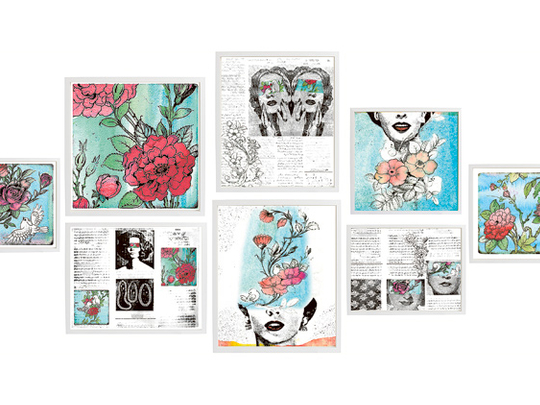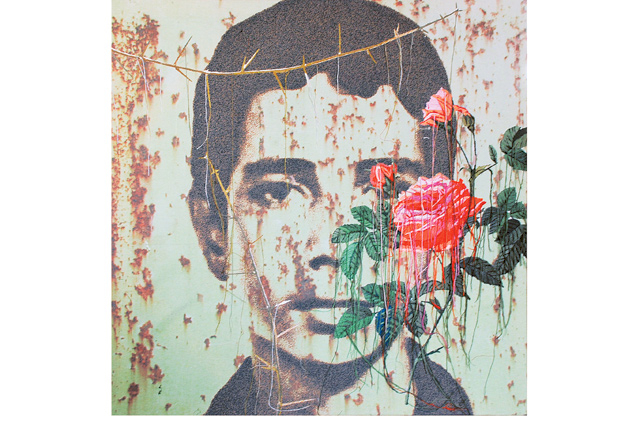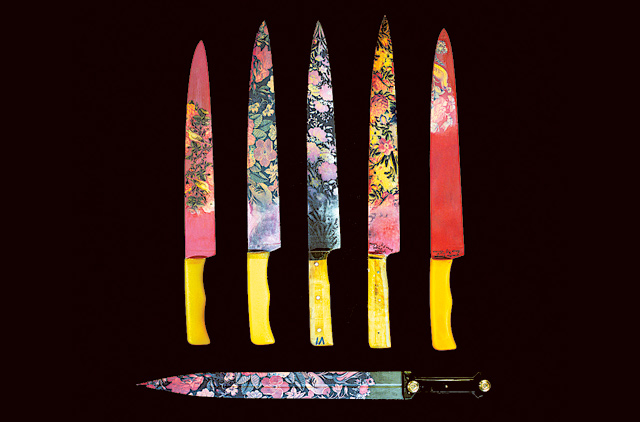
The “rose and the nightingale” is a theme that has been used in Persian literature and visual imagery for centuries. The rose represents beauty, perfection and a sometimes self-absorbed and cruel beloved. And the nightingale symbolises the devoted lover yearning to become one with the beloved. The theme can thus be interpreted as a metaphor for both earthly and spiritual love. Curator Maneli Keykavoussi explores modern interpretations of this age-old theme in a group show titled “The Rose and the Nightingale: A Persian Iconography” by bringing together works by pioneers of Iranian modern art such as her mother, the late Farideh Lashai, and Farshid Mesghali and well-known Iranian artists such as Amin Roshan, Rozita Sharafjahan, Dariush Hosseini, Ladan Boroujerdi, Navid Azimi Sajadi, Masoumeh Bakhtiari, Farid Jafari Samarghandi, Gizella Varga Sinai, Rasool Soltani and Sara Rahanjam.
“The rose and the nightingale, which is a subtheme of flower and bird painting [gol o bulbul], was a central imagery in the decorative arts of the Safavid [1501-1722] and Qajar [1785-1925] eras. The origins of this imagery may even be traced back to the 14th century and the Ilkhanid period [1256-1353], where the rose appeared as a distinct motif in illustration of Persian poetry and epic texts, as a metaphor for youthfulness, beauty and young love. From manuscript illustration, the gol o bulbul pattern entered decorative arts and later, during the Safavid period when the city of Isfahan was a major trading centre, the imagery merged with botanical arts and the European flower-painting genre. It became a distinct form of iconography used to decorate many different objects from ceramics to lacquered boxes. The iconography became such an important part of Persian culture that by the late Qajar era, the country was known as the ‘Kingdom of the Rose and Nightingale’ in the West. The fact that even today artists use this theme in their work indicates its status as an inseparable iconography of the Iranian cultural identity. The works in this show represent just some of the ways in which modern Iranian artists have used this traditional theme to reflect the zeitgeist,” Keykavoussi says.
The show demonstrates how an ancient decorative motif from cultural iconography has now been transformed into a new and powerful artistic vocabulary. A striking example is Ladan Broujerdi’s rendition of the well-known Rolling Stone “Tongue and Lip” logo in a traditional gol o bulbul pattern, making a tongue-in-cheek reference to the influence of Western pop culture in modern Iranian society. Equally eye-catching is Gizella Varga Sinai’s enigmatic array of butcher’s tools painted with birds and flowers.
In Rozita Sharafjahan’s “Childhood of Jamshid”, the beautiful roses embroidered on a photograph of a child martyr of the Iran-Iraq War refers to the impermanence of life. And the perishing roses and collapsing birds in Dariush Hosseini’s abstract paintings comment on the turbulence and destruction he sees around him. On the other hand, Farid Jafari Samarghandi has printed the familiar motif on aluminium foils used for taking drugs, in a cynical comment on the taboo subject of the growing problem of drug addiction in his country.
Amin Roshan’s artwork, from his “Jikak Crown” series, is a safety helmet of the Iranian National Oil Company that has been engraved with birds and flowers by skilled silversmiths. The helmet tells the story of his family, whose three generations, including him, have worked in the oil company; and also of how oil and the culture of oil has affected the people of Iran and the region. Masoumeh Bakhtiari also connects with a bygone era in her nostalgic painting, “Nobody”, in which the faces of former empress Farah and her daughter are barely visible beneath pieces of translucent paper and pencil-drawn roses.
Tarlan Rafiee gives a feminist twist to the traditional rose-and-nightingale symbolism in her mixed-media lithograph, “Love Letters”. The artist has combined images of women taken from Western lifestyle magazines of the 1960s with articles from Persian women’s magazines that promote objectification of women and a passive role for them, to question the traditional understanding of the rose as feminine and the bird as masculine, and make a strong statement about the collapse of stereotypical gender roles in modern times. Similarly, her husband Yashar Samimi Mofakam’s works of acrylic and silk screen on canvas depict birds taken from the covers of ancient poetry books as stray creatures lost amid a jumble of words from the poems in the books as a reference to a forgotten culture and the diverse influences on Iranian culture.
Underlining the eternal fascination of Iranian artists with the gol-o-bulbul theme are Fardeh Lashai’s evocative paintings from her “Cypress Trees” series and Farshid Mesghali’s cheerful, vibrant wire sculptures featuring colourful peacocks perched on golden trees. “Iran has been in the midst of revolution for a long time. So one must appreciate the fact that by the childlike, optimistic outlook in his work this master artist has kept something very important in our culture alive,” Keykavoussi says.
Jyoti Kalsi is an arts enthusiast based in Dubai.
The show will run at JAMM art gallery, Al Quoz, until May 29.














